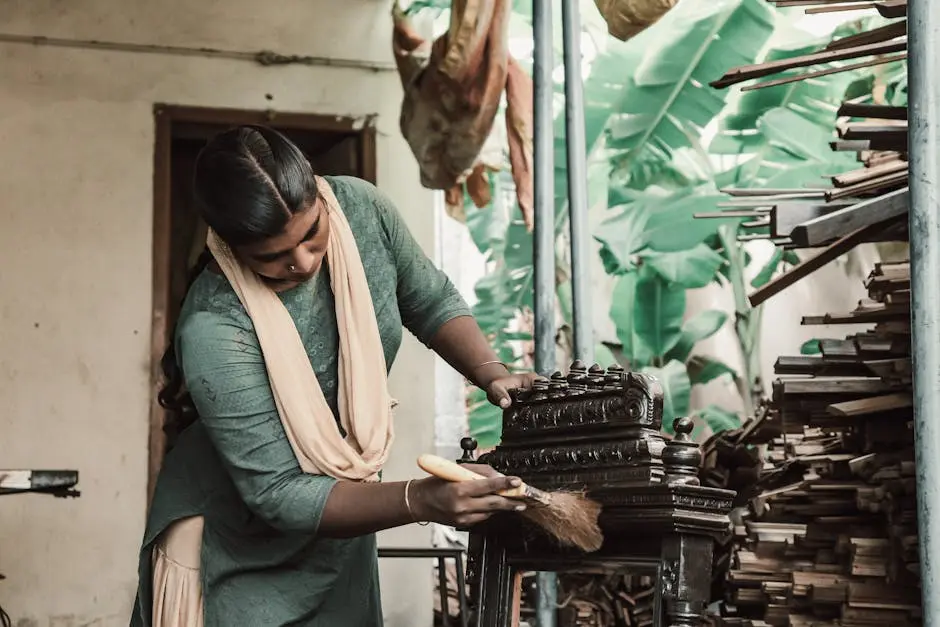The Art of Furniture Restoration: Breathing New Life into Treasures
Furniture restoration is more than just a hobby; it’s a way to connect with history, creativity, and sustainability. In this blog, we’ll explore the fundamentals of breathing new life into treasured pieces, along with tips and techniques for every enthusiast, whether you’re a seasoned pro or just starting out.
Understanding Furniture Restoration
Furniture restoration can seem daunting at first, but it’s all about understanding the process. Here, we’ll discuss what furniture restoration entails and why it’s a valuable craft.
At its core, furniture restoration is about reviving old pieces to their former glory or giving them a new purpose. It’s a blend of art and science, where every brushstroke or new upholstery tells a story. Restoration is not just about aesthetics; it’s also about preserving the character of the piece. Understanding this fact opens up a world where every dent, scratch, and unique mark adds to the history rather than detracts from it.
The allure of furniture restoration lies in the transformation. Imagine taking a weathered chair, perhaps banished to the back of a garage, and with meticulous care, turning it into a stunning focal point for your living room. It’s not just about the end result; the journey through each step is equally gratifying. This blog will guide you, step-by-step, through the often-overwhelming landscape of restoration and help you build confidence in your abilities.
Essential Tools and Materials for Restoration
Having the right tools and materials is crucial for successful restoration. In this section, we will list the must-have items and tips on sourcing quality materials.
Let’s start with the basics. A good restoration toolkit typically includes a selection of screwdrivers, a hammer, and various sanding tools. However, that’s just the tip of the iceberg. Depending on your specific project, you might also need specialized items like wood glue, clamps, and high-quality paintbrushes. Understanding the purpose of each tool is essential, as it determines your efficiency and the quality of your work.
Beyond tools, sourcing materials is equally important. Look for local suppliers who specialize in reclaimed wood or high-quality fabrics for upholstery. Also, don’t overlook online marketplaces that offer vintage hardware or artisan finishes. A little research can open a treasure trove of possibilities. Networking within restoration communities can also lead you to hidden gems and trusted sources that you might otherwise miss.
Lastly, remember that the heart of restoration lies in the quality of materials you use. While it may be tempting to opt for cheaper options, investing in quality materials will ensure longevity and a more polished final look. As the saying goes, you build a strong foundation first; the same principles apply here—great outcomes start with great inputs.
Assessing Your Furniture Piece: The First Step
Before diving into restoration, it’s important to assess your furniture’s condition. Here, we’ll cover what to look for and how to determine the best approach.
Say you’ve found that antique chest of drawers at a flea market; it may look charming, but assessing its condition is key to understanding the effort needed for restoration. Start by inspecting the structure. Are the joints strong? Is there any wobbling? Look for signs of wear, damage, or pest infestation. Each of these indicators will inform your restoration strategy, as some may require immediate attention while others can be dealt with later.
Next, it’s essential to evaluate the finish on your piece. Various finishes can tell you about the age and potential vulnerabilities of the wood. For instance, if it’s painted, you can sometimes uncover a beautiful stain underneath with some gentle sanding. This discovery can lead to a stunning contrast, where history meets modern tastes. Don’t forget to assess the piece’s sentimental value too! Knowing the story behind your furniture can evoke a sense of purpose as you embark on its restoration.
Techniques for Repairing and Restoring
From sanding to reupholstering, we’ll explore various techniques that can be used in the restoration process. We’ll share step-by-step guides to empower you in your projects.
Let’s talk about sanding—a fundamental skill in furniture restoration. It’s not merely an act of smoothing out surfaces but reviving the wood’s natural beauty. Start with a coarse grit paper to remove old finishes and imperfections, and work your way towards a finer grit for a silky finish. The key is patience; rushing through this step can lead to an uneven surface. Remember, each pass is a step closer to showcasing the wood grain that lies beneath.
Another significant aspect of restoration is reupholstering furniture, which can seem intimidating to novices. Start small by practicing on a chair cushion rather than an entire sofa. Take your time to remove old fabric carefully, noting how it’s constructed. This practice will guide you when you take on larger projects. Choose fabric that complements the restored piece but is also durable enough to withstand daily use. The joy of seeing your furniture transform with a new fabric can be incredibly rewarding.
Choosing the Right Finish: Stains and Paints
Selecting the perfect finish can dramatically alter the appearance of your furniture. Discover the difference between stains, paints, and clear coats, and learn how to choose what works best for your project.
The finish is where all your hard work comes to life. A well-chosen stain can highlight the natural grain of the wood, while a splash of paint can add a modern twist to a traditional piece. When selecting your finish, consider the piece’s original style and complement it without overshadowing its inherent charm. For instance, a deep walnut stain can enhance the elegance of a Victorian chair, whereas a bright mint paint can create a cheerful vibe on a mid-century dresser.
Always test your finish on a small, inconspicuous area before going all in. This will help you visualize how the finish interacts with the wood, giving you a chance to tweak or adjust your choice accordingly. Additionally, don’t forget about protective clear coats, which can add durability and longevity to your restoration. They can seal your work, ensuring your beautifully finished piece withstands the test of time and daily wear.
Inspiration from Successful Restorations
Sometimes, all it takes is a bit of inspiration to spark creativity. We will showcase stunning examples of successful restorations that breathe new life into beloved pieces.
There’s a special thrill that comes from seeing a before-and-after of a restored piece. For instance, consider a weathered dining table—a once-loved item that seems to have lost its luster. With some sanding, a deep walnut stain, and fresh varnish, this table transforms into a centerpiece that invites family and friends to gather. It cleverly juxtaposes the nostalgia of shared meals around the table with a contemporary finish, bridging generations beautifully.
And let’s not overlook the magic of upholstered pieces! A faded armchair, once left in a corner, can shine again with the right fabric choice. Think bold prints or rich textures that make a statement. The stories it will tell once brought back to life can touch the hearts of many. Each restoration tells a story—a combination of past lives and future potentials waiting to be explored.
Embrace the Journey of Restoration
Embarking on a furniture restoration journey not only enriches our homes with unique character but also nurtures a sense of accomplishment and sustainability. By carefully transforming old treasures, we preserve stories and embrace creativity. So, gather your tools, unleash your imagination, and start restoring today!

